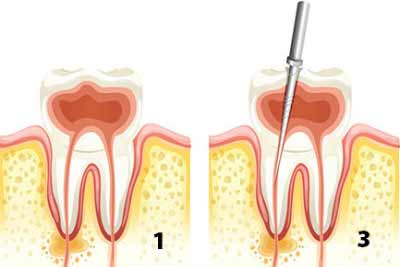Root canals are a common dental procedure, but still lots of patients want to know—what exactly are they for, anyway?
More than 15 million root canal treatments are performed in North America each year, yet many people have questions about the purpose, the process and the benefits. Living Healthy provides answers to some commonly asked questions.

QWhy do I need a root canal?
A When the nerve of your tooth becomes infected or inflamed, a root canal helps you keep the tooth instead of having it removed. This helps prevent jaw problems and means you won’t need an artificial tooth.
Q What does a root canal involve?
A A root canal treatment, also called endodontic treatment, involves removing infected, injured or dead pulp from your tooth. If left untreated, an infection, which causes a tooth to become abscessed, can lead to serious health problems.
Q Who does this procedure?
A Your dentist may do your root canal or refer you to an endodontist, who specializes in treatment of the dental pulp or nerve of a tooth.
Q What happens during a root canal?
A The procedure goes like this (see left):
1. The dentist gives you a local anesthetic, or freezing, then places a rubber dam around the tooth being treated to protect it from bacteria that can be found in saliva.
2. An opening is made in the tooth to reach the root canal system and the damaged pulp is removed by cleaning and enlarging the root canal system.
3. After the canal has been cleaned, the dentist fills and seals it.
4. The opening of the tooth is then sealed with either a temporary or permanent filling.
Q How many visits are required?
A Root canal treatment may be done in one or two appointments.
Q Does it hurt?
A Your mouth is frozen during the procedure, and you will not likely have any discomfort during the root canal itself. Afterwards, your tooth may be tender for the first week or two. However, significant pain and swelling aren’t common. If either occurs, you should call your dentist or endodontist.
Q Is it always successful?
A Most root canal treatments are successful. But in rare cases, a second treatment is needed. At this time, the filling material is removed, and the canal is re-cleaned, reshaped and refilled. Or, the tooth may benefit from endodontic surgery.
Q Is my tooth protected with a root canal?
A Root canal treatment does not protect your tooth from other types of damage in the future, however. The root canal relieves symptoms, but the tooth still requires a proper final filling or crown. Proper care and regular dental visits for follow-up are required.
